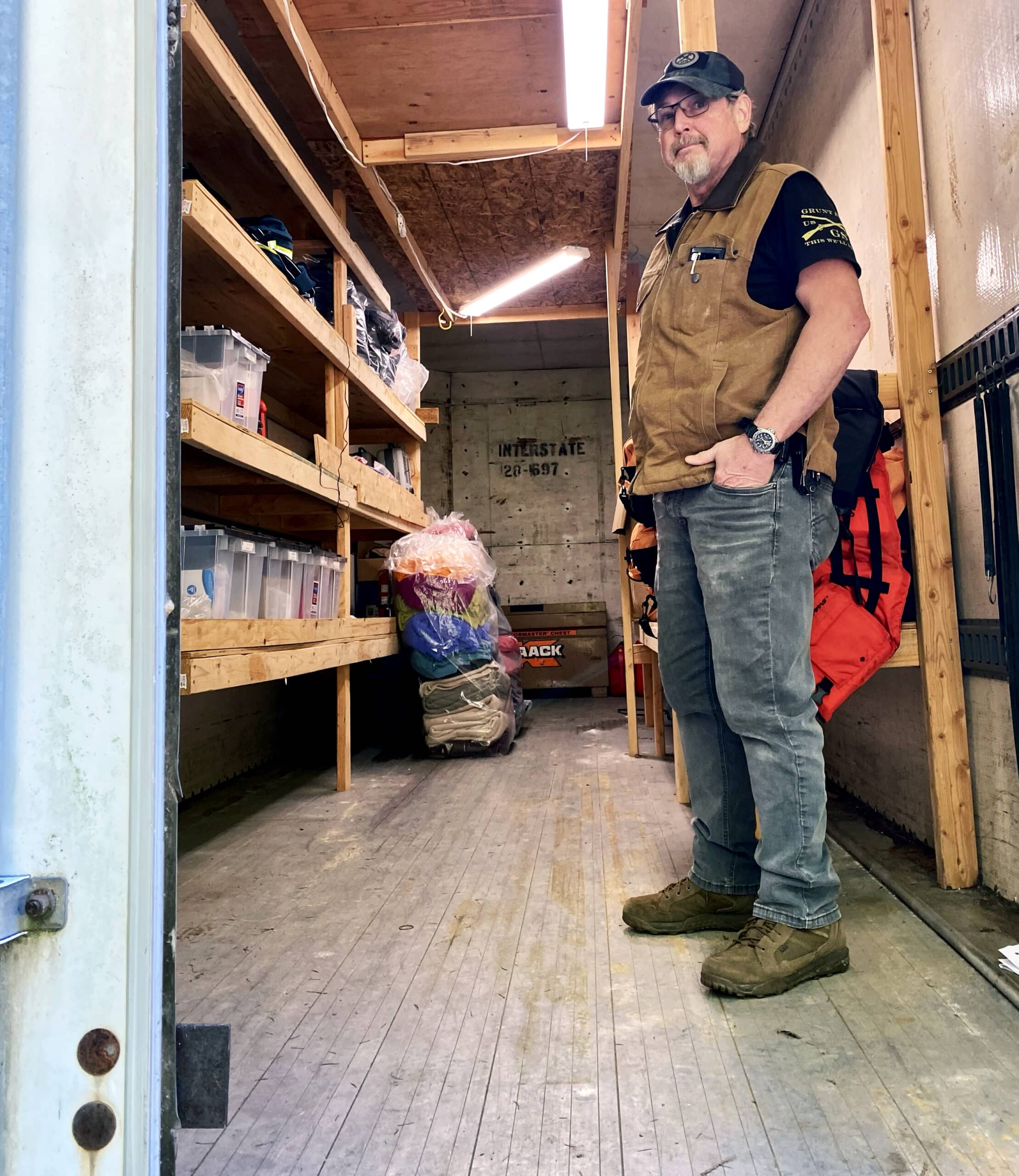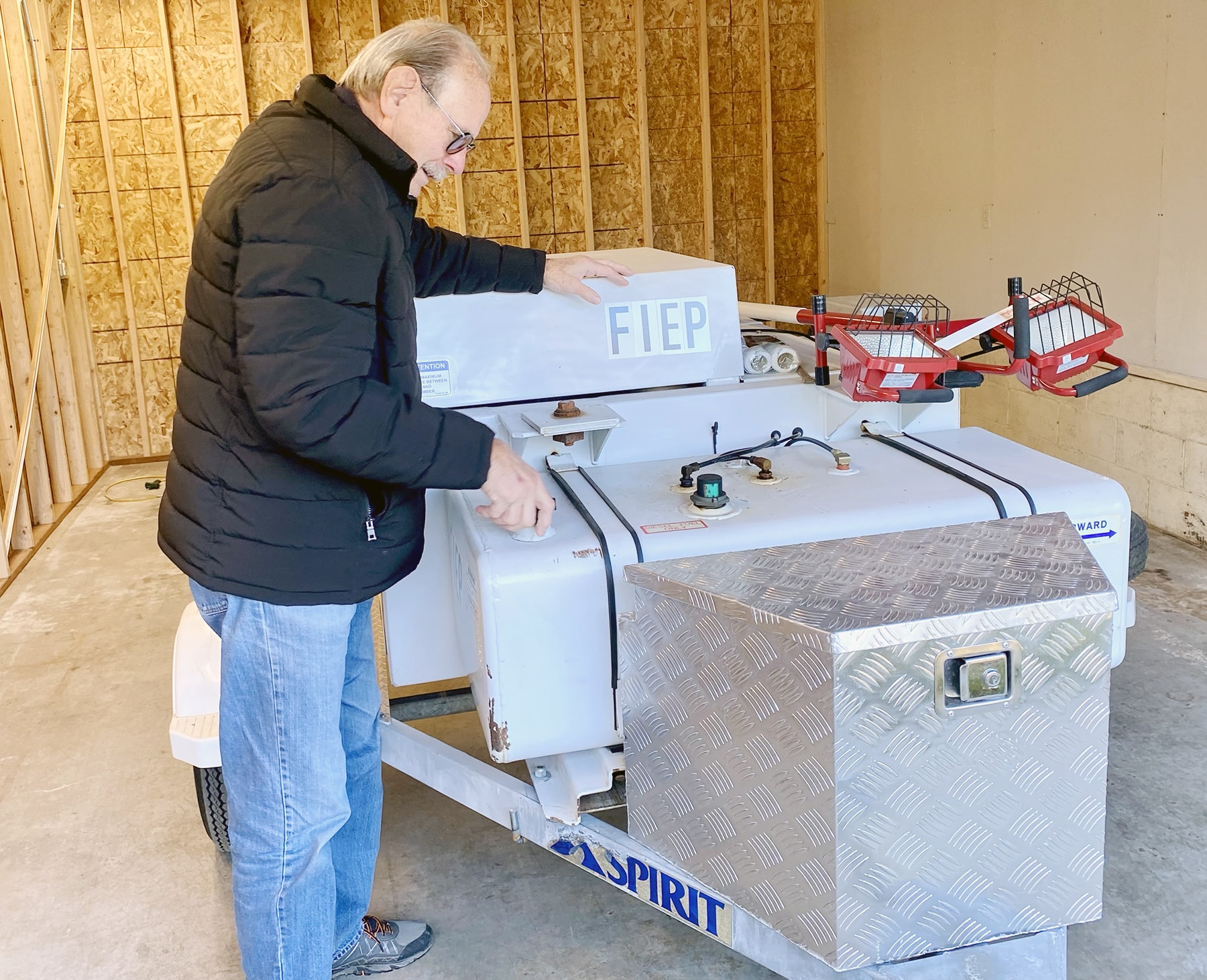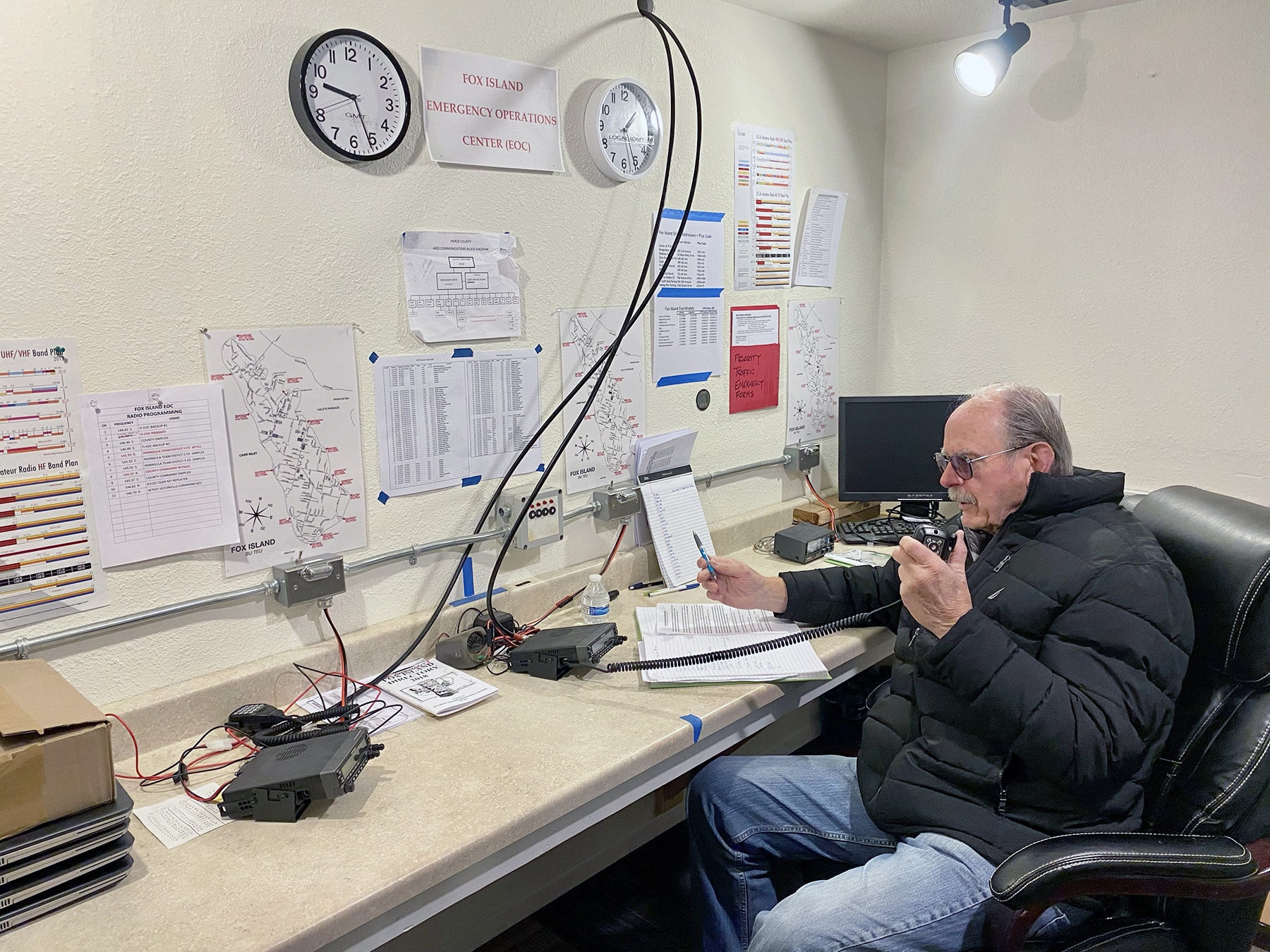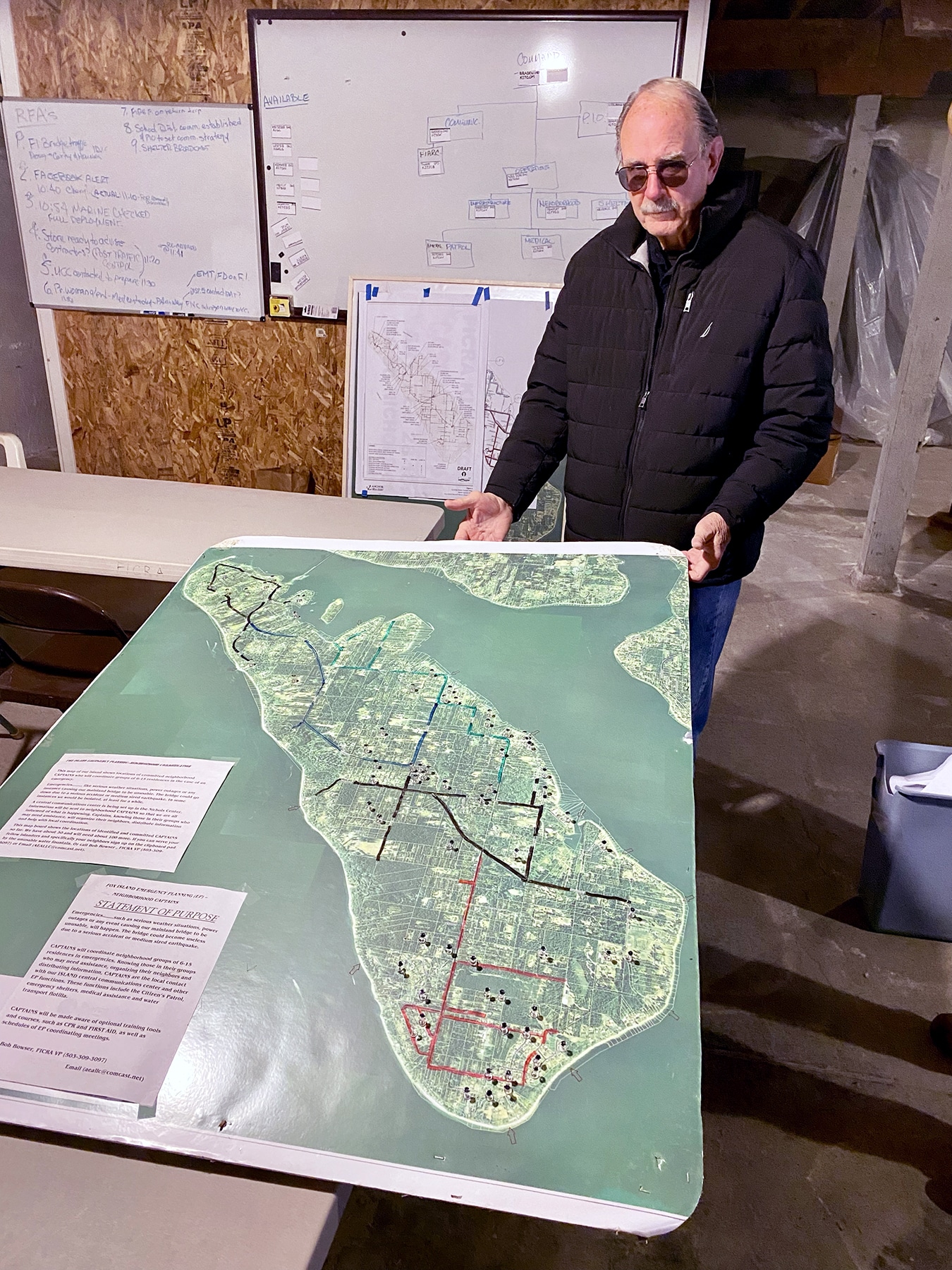Community Environment Government Police & Fire Transportation
Fox Island group a model for disaster preparedness
There’s nothing like living on an island with a 68-year-old bridge to make you think, “What’s going to happen when The Big One hits?”
Jim Braden and Doug Nelson have thought about this a lot. They and other members of the Fox Island Community and Recreation Association Emergency Response Organization have worked tirelessly to ensure the island’s nearly 4,000 residents are as ready as they can be to survive a cataclysmic earthquake, along with your basic wind storms, heat waves and other natural disasters.
A model of success
The group is a model for community-level emergency planning. They were one of the few residential groups in Pierce County to take part in the 2016 Cascadia Rising drill. The drill is a multi-state response to a simulated major seismic event on the Cascadia Subduction Zone.
“Jim Braden, Doug Nelson and the FICRA emergency preparedness team on Fox Island are doing exactly what needs to be done,” said Chief Dennis Doan of Gig Harbor Fire & Medic One. “Their organization is a great model for other neighborhood groups to emulate. They are the most prepared group I have ever encountered. I wish all neighborhood associations were as organized as they are.”
And yet, Braden said, much work remains. Only about 50 percent of the island’s roughly 1,700 households have stockpiled the recommended 30 days’ worth of water, food, medications and basic supplies.

Doug Nelson of the Fox Island Community and Recreation Association Emergency Response Organization stands inside a semi-trailer loaded with emergency supplies for use in a disaster. Christina T Henry
“The cornerstone of everything we’re doing is individual family preparation,” Braden said. “That’s probably the single-most important thing.”
Bridge concerns
Efforts to bolster Fox Island’s resiliency had been ongoing for decades. In 2012, an inspection of the bridge across Hale Passage — the only way on and off the island — showed deterioration of support footings. Pierce County Planning and Public Works has proposed replacing the bridge, but if that happens, it will be years out. The bridge is sound for normal use, but is at risk of collapse during a major seismic event.
Braden, Nelson and others recognized the potential for an 8.0 to 9.0 magnitude earthquake along the offshore fault line that runs from British Columbia to northern California. They reached out to local government and emergency agencies and found out they could be on their own for days if not weeks.
“If we were to have a large-scale disaster, we realized there’s hardly any resources on this island,” Braden said. “If the bridge were to go down, we weren’t getting any help from the mainland.”
Fox Island’s charming isolation would be its disadvantage in a major disaster. Larger commercial and residential centers will inevitably take higher priority.
“We kind of found out there really isn’t a backup plan if something does happen,” Nelson said. “So that was when we all got our heads together that we really needed to form a plan of our own.”
That’s a reality most communities are slow to absorb, let along act on, said Todd Meyer, assistant chief for Gig Harbor Fire & Medic One.
“I think it’s great,” Meyer said. “They’ve embraced the idea that they’re going to be on their own.”
Disaster preparedness equipment
Fox Island has one post office, one gas station-grocery mart, one fire station (typically not staffed full-time), no medical clinic and no school. Students attend school off island.

Nichols Community Center on Fox Island serves as the command center for the Fox Island Community and Recreation Association Emergency Response Organization in the event of a disaster. Christina T Henry
The island does have museum, a yacht club and a community center — its former school building constructed in the 1930s and purchased in 1996 by the nonprofit FICRA Building Trust. The Nichols Community Center is where you’ll find the heartbeat of Fox Island. Everything from quilting bees to trivia nights to summer music festivals happens at the site.
The building is also the command center for disaster response. Descend the uneven concrete stairs to the basement and duck under giant heating ducts (watch your head). On the back wall, you’ll find a giant whiteboard to show the status of response teams and neighborhood block coordinators. Behind the wall is the radio room, with equipment maintained by the local ham radio club. Here organization commanders assess damage in a disaster and direct resources where most needed.
An industrial-sized portable generator and two large back-up battery banks ensure the community center has power. Up the hill at the island’s water utility, go-kits of medical supplies and emergency equipment, blankets and other gear fill a stationary semi-trailer.

Jim Braden of the Fox Island Community and Recreation Association Emergency Response Organization shows an industrial-grade generator stored in the garage of the island’s community center. It would power the center as needed in a natural disaster. Christina T Henry
The emergency preparedness group bought equipment and supplies after securing state and federal grants.
Organization
The group has worked with government and non-government sources to develop their disaster plan. Both Braden and Nelson have a background in emergency response. Braden worked for Chevron, Nelson for Foss Maritime’s environmental response group.
In the event of a disaster, people in central command coordinate teams of volunteers ready to deploy on short notice. These include a medical team, led by a physician’s assistant, and a marine branch co-led by a Navy veteran and a member of the U.S. Coast Guard Reserve.
The infrastructure team, led by a structural engineer, has access to tractors, 4-wheel drives and chainsaws. Their job is to assist with access and to check structures for safety.

Jim Braden of the Fox Island Community and Recreation Association Emergency Response Organization shows a map of the island’s neighborhoods that would be used to assess damage and prioritize response in a disaster. Christina T Henry
There’s also a communications team and an emergency patrol branch.
FICRA divided the island into five zones, each with its own coordinator. Neighborhoods of 10 to 15 households comprise each zone, each (at least in theory) with its own block coordinator. That person’s job it is to check on residents, especially those who are elderly or otherwise vulnerable, and to report in to central command on their neighborhood’s status and needs.
Disaster preparedness success
The system works, as the group has found over the years. The community center has served as a short-term shelter during severe cold weather, power outages and heat waves. Two local churches stand ready to serve as shelters with cots and food in a longer-term event.
During a recent wildland fire at the south end of the island, the team was able to alert a block coordinator whose neighborhood was potentially at risk. Nobody needed to evacuate, but residents were ready.
Recruiting volunteers, especially at the block coordinator level, is an ongoing challenge, Braden said. So is getting households to prep for disasters.

Jim Braden of the Fox Island Community and Recreation Association Emergency Response Organization shows a map of the island’s neighborhoods that would be used to assess damage and prioritize response in a disaster. Christina T Henry
Braden displayed a map of the island’s five zones. Colors on the map indicate which neighborhoods have a block coordinator and which are prepped for self-sufficiency. There’s a lot of white space on the map. They’ll keep working on that.
Individual preparedness
Braden fears the Fox Island group could be a victim of its own success. He worries the message of individual household preparation gets lost because of their regional reputation.
“We want to be sure people understand we’re not a hospital. We’re not a grocery store. We’re not a fuel station, any of that kind of thing. Because otherwise people aren’t going to be prepared,” Braden said. “At least 51 percent of the value of what we’re doing is getting individual families to recognize that the best they can do for themselves, period, is to be prepared.”

Jim Braden of the Fox Island Community and Recreation Association Emergency Response Organization shows an industrial-grade generator stored in the garage of the island’s community center. It would power the center as needed in a natural disaster. Christina T Henry
Find FIRCA
Visit foxislandficra.org to find out how to prepare your household for disaster. See how to sign up for Pierce County ALERT, an app that provides up-to-date information from emergency response agencies. Access an interactive map to learn who your block coordinator is, and view videos on topics like food storage.
Find the Fox Island FICRA Facebook page here.

